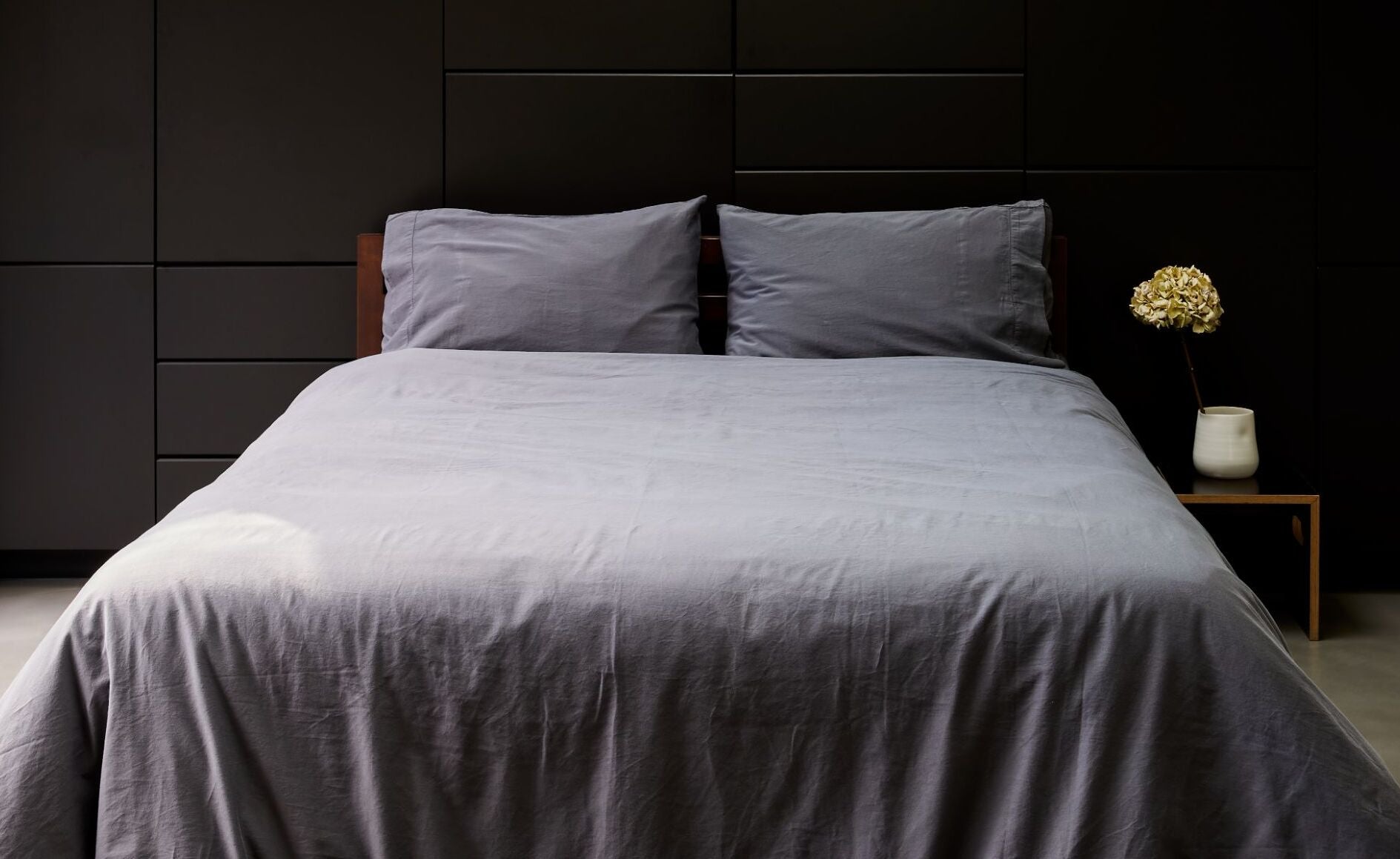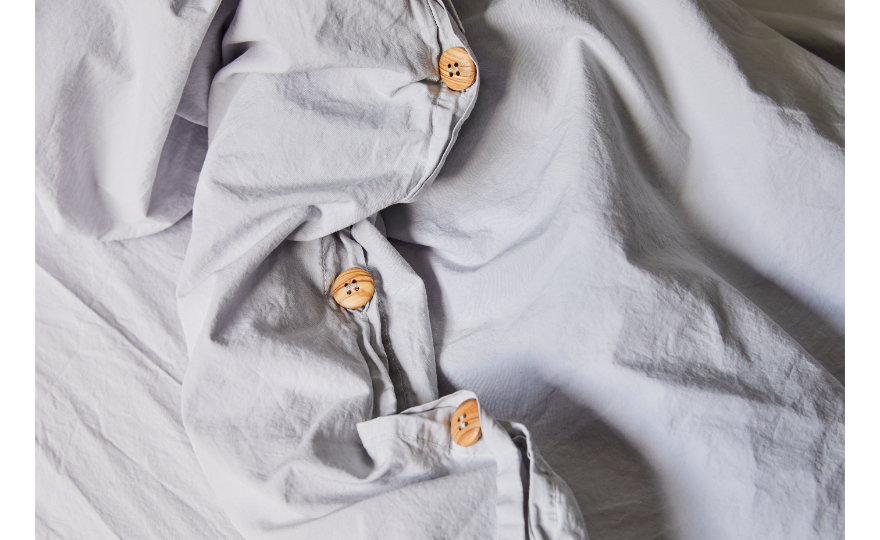365-DAY GUARANTEE | FREE SHIPPING | FREE RETURNS
365-DAY GUARANTEE | FREE SHIPPING | FREE RETURNS
365-DAY GUARANTEE | FREE SHIPPING | FREE RETURNS
A duvet cover is a soft layer that you add over a duvet insert to create a colorful look and a warm, cozy feel. Think of this bedding style as a giant blanket cover case, and the duvet insert as a giant pillow. Simply slip your duvet cover over your bedding to add an extra layer that’ll bring your bedroom a touch of color, softness, and warmth. When shopping for the best duvet covers, it’s important to make sure that you choose the right size, style, and material to ensure that it suits your needs and your bedroom. Our duvet buying guide is here to help you learn how to choose a duvet cover based on your space and existing bedding, so read on to learn more.
There are several different types of duvet covers and many important features to look for when you’re buying a duvet cover. Keep these duvet cover tips in mind as you shop for the best option for you.




When you shop for duvet covers, it’s important to select one in the appropriate size. For example, a full duvet cover should mention that it’s a full duvet size on the packaging. In general, the duvet cover should fit a duvet or comforter that is approximately two inches larger or smaller in dimension overall. Purchase a larger duvet if you want a snug fit or select one that’s slightly smaller if you want it to fit a little bit looser. Remember that once you wash the duvet cover, it could shrink anywhere from three to five percent in total size. A duvet that’s too large won’t fit inside the duvet cover correctly and will end up being “scrunched up,” while duvets that are too small won’t stay securely in place inside the cover.
Some people prefer their duvet insert to be the exact same size as the duvet cover sizes in inches. Others might want to select an insert that’s slightly larger or smaller than the cover itself. There are pros and cons of duvet covers for both of these options.
First, a duvet that’s slightly smaller than the cover creates a relaxed, lived-in look and feel. However, if it’s too small, it will slide around and won’t usually stay in place, resulting in the duvet becoming wrinkled or bunched up to one side. Duvets that are larger than the cover will have a tighter fit that tends to look crisper and more polished. However, if the duvet cover shrinks after it’s washed, it will end up being too small for the duvet to fit inside.
Use this chart to determine which duvet cover size you need for a proper fit:
You can purchase your duvet cover based on the size of your mattress, or on the actual comforter/duvet insert you’re using. In most cases, it’s best to buy a duvet cover that’s approximately two inches shorter than the filler on all sides to create a full look, but it could also cause the duvet to bunch to one side. In this case, choose a cover that fits the exact same dimensions as your duvet or comforter for a smoother aesthetic. Make sure you know how to keep a duvet cover in place by tying the strings on each corner of your insert to the four loops located on each inside corner of the cover.
Ideally, the size of your duvet cover should be at least 12 inches longer and 16 inches wider than the total dimensions of your mattress. For those with extra-deep mattresses or for people who use thick, pillow-top mattress covers, you may want to choose a cover that’s slightly larger.
Keeping the tips and measurements above in mind, it’s ultimately up to you as to which duvet cover size you choose. In most cases, people choose the right duvet cover based on the label that matches their mattress (i.e., full, queen, king, etc.). Here are the six standard mattress measurements you can use for reference when shopping for the best duvet covers:
Most kids’ bedrooms include beds with a twin or twin XL mattress size. Twin XL beds are slightly longer, making them ideal for older teens or taller children. You’ll typically find a full or queen-size mattress in a guest bedroom, and a queen, king, or California king mattress in the main bedroom. As you can see, the standard duvet cover measurements listed above are much larger than the mattress dimensions themselves. When in doubt, choose a cover that’s labeled with the same size mattress you have at home to ensure a proper fit.

What do you put inside a duvet cover? You might think that a duvet insert and a comforter are the same things, but they’re actually different, mostly in terms of how each one is constructed. Comforters consist of one piece of bedding that you can use right out of the packaging. Duvet inserts work more like a fill that’s solely designed to fit inside your duvet cover.
Comforters have a soft, quilted surface with filling that is evenly distributed inside, and a cover isn’t always necessary in order to use them. However, it’s highly recommended that you use a cover with a duvet insert just to protect it and to enjoy a much softer and more comfortable feel when you sleep.
As for whether or not you can put a comforter inside a duvet cover, you can absolutely put a comforter inside of a duvet cover if you choose. Most people do this if they don’t like the color of their comforter or if they just want to add some more layers to their bedding for additional warmth. If you have a basic white comforter, putting it inside a colored or printed duvet cover will give your bedroom a fresh, new look.
Can you use a duvet cover by itself? While you can certainly use your duvet cover on its own, it might not be thick or warm enough to keep you cozy at night. In most cases, it’s best to add your favorite comforter or a nice duvet insert to get that extra layer of warmth you seek.
There are a few pros and cons of using a comforter with a duvet cover, including:
Pros
While exact comforter sizes may vary slightly, most comforters come in a few standard sizes. Note that these dimensions are somewhat different than duvet covers, so use them as a guide to help you select the ideal size for your bedding type.
The best duvet covers are those that feature a material, size, and style you like. Always start by determining what size duvet cover you’ll need to ensure a perfect fit based on the size of your mattress. Then, consider other factors including the closure type, ease of care, and color or pattern that suits your needs the best. Or & Zon is the best place to buy duvet covers. Be sure to shop our selection of beautiful duvet covers made of soft, sustainable materials including our popular stonewashed linen aand other beautiful options, including our organic sateen duvet covers and much more. Every product we make is designed to help you transform your bedroom and your sleeping experience.
